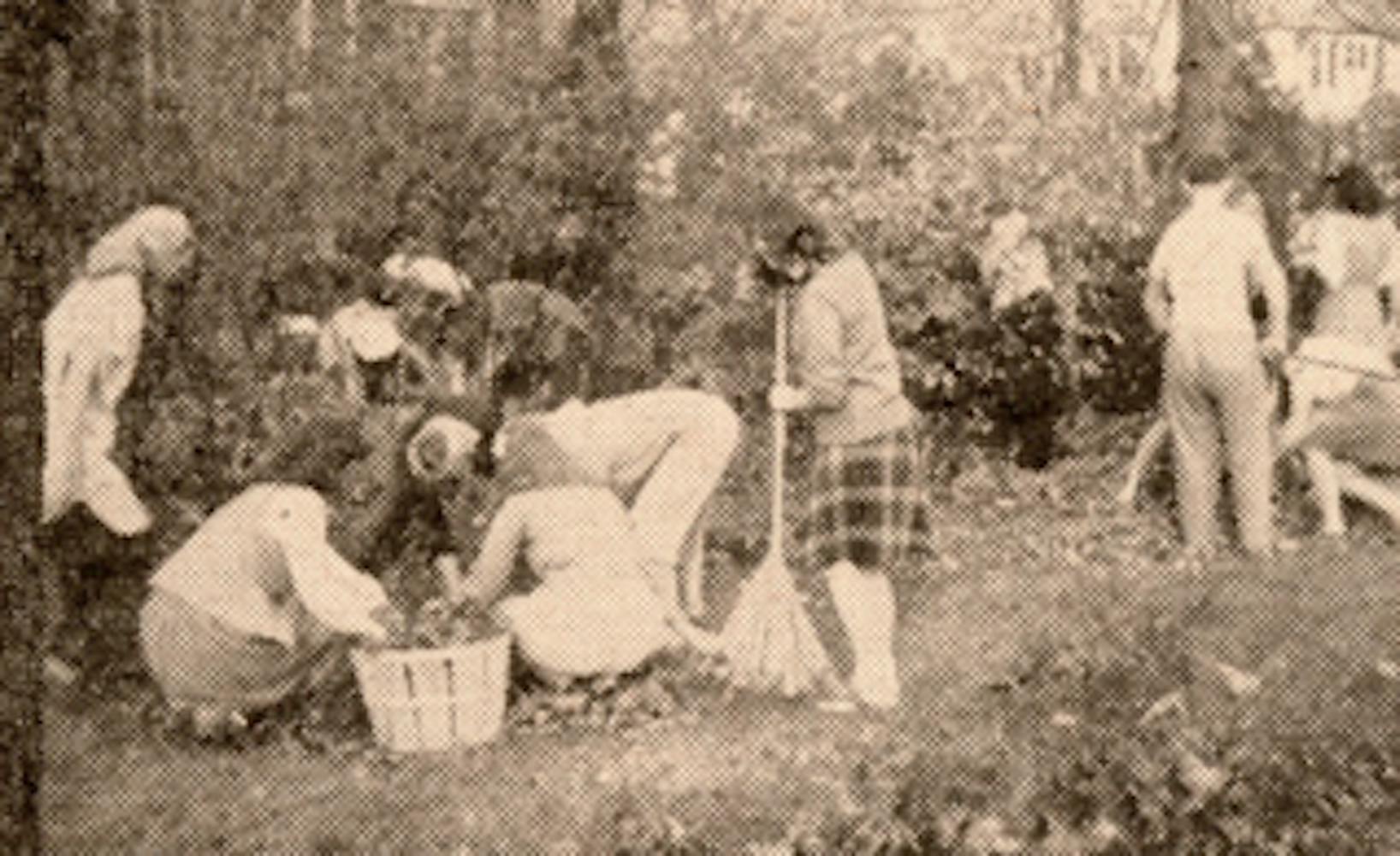Editor's note: In honor of the university's centennial year, The Daily News is counting down 100 days to the university's celebration Sept. 6 with 100 of Ball State's most famous traditions and figures. Check back each day to read about Cardinal history.
During World War II, Ball State’s enrollment of women, then called co-eds, increased drastically in relation to male students.
The change in composition of student numbers and shortage of resources led to a different campus culture, and in 1943, Homecoming was canceled for the first time. Homecoming was not reinstated until 1946 and during that time, alternate celebrations were held.
Perhaps the largest celebration was the annual Leaf Rake, which was held for the first time in November 1943. Due to a lack of workers in the grounds-keeper crew, the purpose of the Leaf Rake was to clean the campus from fallen leaves.

In the Nov. 4, 1949, edition of The Ball State News, Jake Myers, custodian of the college's flowers and trees, spoke about why the Leaf Rake was so important. He said it is one of the most valuable things around campus.
Students, faculty and administration, which was comprised of mostly women at the time, would work side by side to rid the campus of leaves.
And while it served a practical purpose, the Leaf Rake was also meant for fun. After students would rake all of the leaves, there would be a bonfire and a snake dance — a line of celebrating students — to the Rivoli Theater.

In this Nov. 6, 1953, edition of The Ball State News, new changes for the traditional Leaf Rake were announced. An all-campus dance was held in the Student Center Ballroom following the rake.
From 1944 and onward, classes were canceled after 2:30 p.m. to allow students to participate in the festivities.
The Leaf Rake was so popular that it continued and got more elaborate after the war ended. The campus was divided into subdivision to make raking more effective.
In later years, the snake dance would lead to a pep rally. There, a pep band would play and apples would be distributed to participants.

In the Oct. 31, 1952, edition of The Ball State News, concerns for the Leaf Rake were addressed. The school purchased a "pulverizer" that was power-driven and converted the leaves into something useful.
In 1945 one student shared his excitement with the Ball State News. "There will be a bonfire, a snake dance, a theater rush, and a dance all in one week-end – the war must be over!"
The tradition was discontinued in 1954 after attendance dropped due to the introduction of mechanical leaf rakers and power mowers.

In this letter to the editor from the Nov. 12, 1954, edition of The Ball State News, Pat Wright from the Public Occasions Committee Student Executive Council explains why the Leaf Rake was canceled. Wright said the committee was working to find something that everyone would be interested in attending, as participation in the Leaf Rake had declined.
Read more centennial content here.
Contact Brynn Mechem with comments at bamechem@bsu.edu or on Twitter @BrynnMechem.










